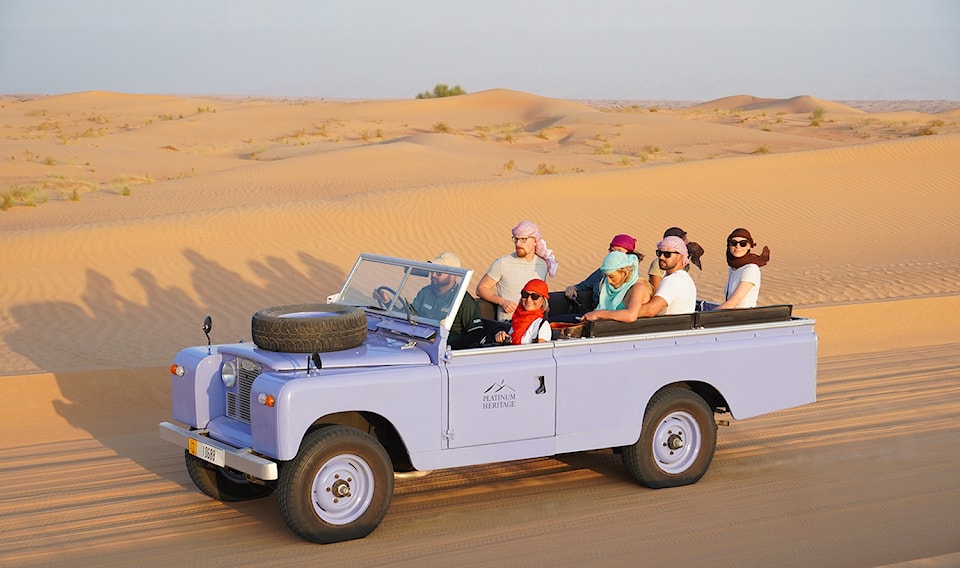When the opportunity to spend 72 hours in Dubai arose on a chilly autumn day, I was struck by a sense of adventure and I saw myself standing in the Arabian desert at dusk, a warm wind caressing my skin and the mixed smell of camel and jasmine filling the air.
Truth be told, I’d never considered visiting Dubai. I knew little about it other than its rough geographical location and some notions that I had gathered, mostly from movies and stories. But as I started to discuss the upcoming trip with others, a couple of themes emerged. Most referred to it as a bucket-list destination and every “boy”, from age seven to 77, knew about the Burj Khalifa (the world’s tallest building) and could rattle off some of its stats.
So, as I settled in to my seat on Air Canada’s newly launched 15-hour direct flight from Vancouver to Dubai, I had some time to do a little research.
I quickly learned that Dubai is the most populous city in the United Arab Emirates. The city went from a small fishing village in the early 1800s to an international trading hub in the early 20th century, but changed its focus to luxury tourism in the late 20th and early 21st centuries. As of 2018, the number of citizens of the UAE sat at around 11.5 per cent of the population; the remaining 88.5 per cent was made up of expatriate workers.
I watched a jaw-dropping time-lapse video showing the extraordinary growth of the city between 2000 and 2020, and then watched an Instagram video of people doing a challenge in Dubai, where they would show how clean the streets are by walking them in white socks.
I suddenly realized I was headed somewhere quite different from anywhere I had ever before experienced.
Many hours later, the car from the airport pulled up to The Dubai EDITION luxury hotel. I stepped into an impressive entranceway, lined by lush gardens, planted with what looked like large versions of my house plants. My whole body relaxed as the warm night air—as well as the hotel’s signature scent—enveloped me. I had arrived somewhere special, a place where luxury is at the forefront and in every detail. And so began a tour of the extraordinary.
Day one started with a trip to the Sheikh Mohammed Centre for Cultural Understanding (SMCCU)—an excellent place to start any visit to Dubai. The motto here is “open doors, open minds,” and all questions—no matter how sensitive—are welcome and answered.
Located in a beautifully restored wind-tower house in Dubai’s historic Al Fahidi neighbourhood, tourists are welcome to sit around the centre courtyard on Bedouin-style carpets and pillows to enjoy a traditional lunch, hosted by a local Emirati woman, who presents a cultural talk followed by a Q&A. This cultural education continued where my research left off, as the woman delved into details about the daily life of the Emirati people. She spoke about the traditional dress which most Emirati still wear: the women are mostly all covered in black or dark colours. The men’s “business suit” is all white with a black cord called an agal, worn around the head, holding on the white headdress. Traditionally, she said, the agal was used to bind camel legs together so they couldn’t wander away.
For our traditional lunch, we feasted on a selection of mouthwatering meat and vegetable birianis, followed by sweet tea and luqaimat, which are fried pastry balls drizzled in syrup.
Now, with a deeper understanding of the culture, and a desire to know more, we crossed the Dubai Creek on a traditional wooden boat to Old Dubai for a tour of the spice, gold, perfume and textile souks (markets).
Our tour guide instructed us to barter with the merchants, saying, “Do not pay more than half of the price that you are originally told!”
We wandered through narrow, covered passageways lined by shops that had baskets piled high with spices in every colour of the rainbow. Some I recognized—like turmeric—but most I did not. I bought some huge dates and a few perfumes in little gold bottles, and when questioned by our guide as to what I paid, I sheepishly admitted that I tried to barter.
“But I’m Canadian,” I said, laughing. “And it felt rude!”
I wandered for a while longer and devoured some delicious date-flavoured camel-milk gelato, while ogling the shop windows in the gold souk.
On day two, I awoke and headed down to breakfast in the hotel, wearing a long-sleeved, high-necked, full-length silk dress (We had been advised to wear modest clothing and I always love dressing the part!) The hotel lobby was chic, with high ceilings and a spiral staircase, all covered in white plaster. I was escorted to a gorgeous terrace, where huge planters of olive trees and bougainvillea divided the tables. As I enjoyed a cappuccino, I noticed that to my left was a full view of the Burj Khalifa. It was shiny and impressive, but I couldn’t quite register the immensity of its scale.
We spent the morning exploring Alserkal Avenue, an industrial space that has been turned into a carefully crafted cultural district. The series of warehouse-style spaces included galleries, cafes, a record store, artsy bookshops, an art movie theatre and a music venue—testament to how well the arts here are supported and encouraged.
That afternoon we set off on a one-hour drive, heading out of the city towards what future-me will refer to as “my favourite part” of my 72 hours in Dubai—the Arabian Desert for the Platinum Heritage Dubai Desert Safari Experience.
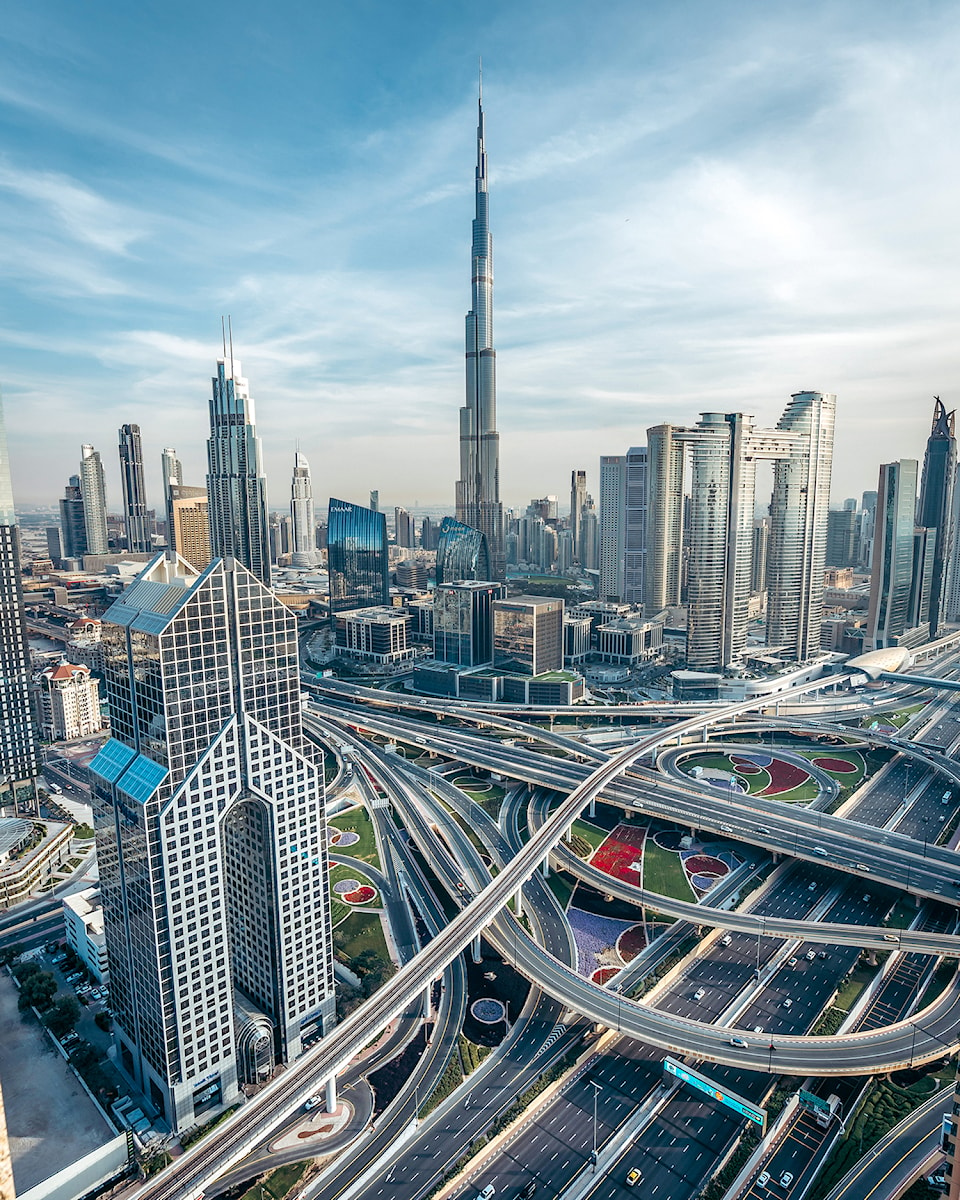
As I watched the Dubai skyline disappear behind me, the Burj Khalifa finally registered its impressive height, standing at least double the height of any other building. Ahead, the golden rolling sands of my pre-trip fantasy awaited, and as we arrived, the Platinum Heritage team took over.
Wearing provided head scarves expertly tied in place, we loaded on to museum-quality 1950s Land Rovers, and motored into the desert. Our guide pointed out some wildlife, including white oryx with long horns, sweet little gazelles, and sand fish, shiny lizards that dove into the sand like it was water as soon as we got too close. As the sun began to set, the sky turning dusty blue against the golden land, we rounded a corner to an area set with blankets, cushions and a sweet mint-tea service.
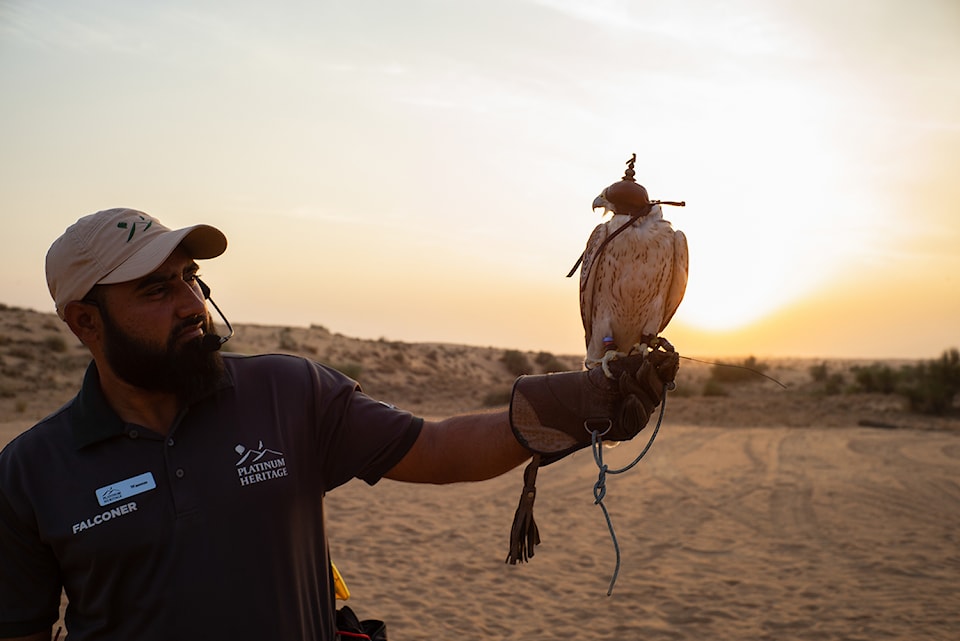
We were here for a falcon demonstration, and discovered that the Bedouins traditionally used falcons for hunting. They’d catch, train and hunt with them, before releasing them back into the wild for their annual migration—and then repeating the process the following year. As we watched, a trainer let “Pegasus” loose and we tried to keep our eyes on the “fastest animal on earth,” which swooped like a speeding bullet with laser precision towards the trainer’s lure.''
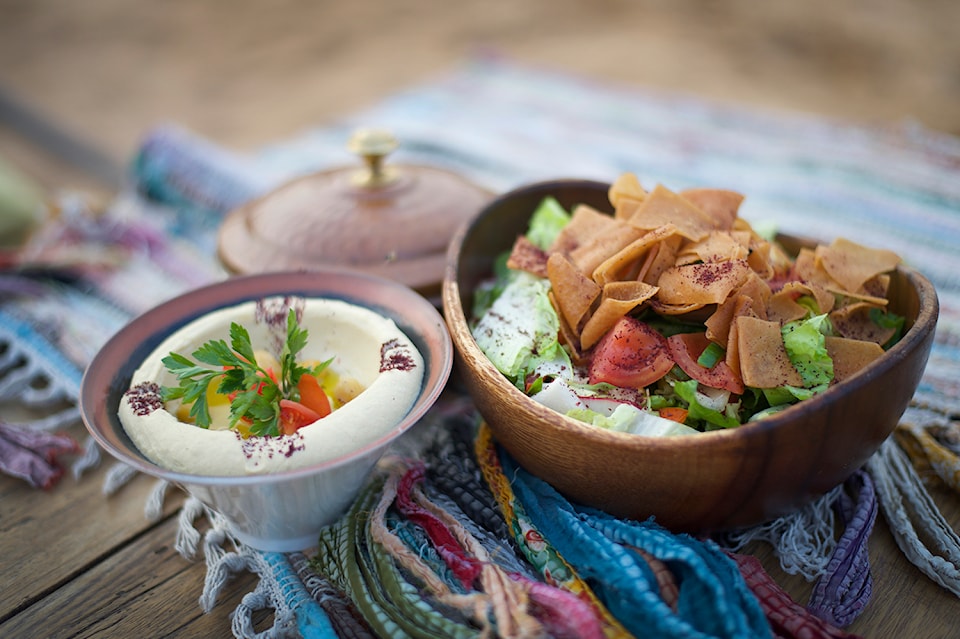
As the heat of the day subsided, we arrived at a huge Bedouin camp enclosed in a stone wall with palms lining the entranceway. Greeted with a half-full cup of black cardamom Arabica coffee and a date, the camp opened up to reveal a huge sitting area, set with Persian carpets on the sand surrounded by cooking fires and low tables. We ate a delicious meal of hummus, baba ghanoush, Fattoush salad, lamb and camel stews and rice, followed by dessert of luqaimat and sweet camel-milk tea.
Now free to wander the camp, I watched a show of traditional music and dance, had my hands tattooed with henna and then squealed like a child as I rode a camel outside the camp walls.
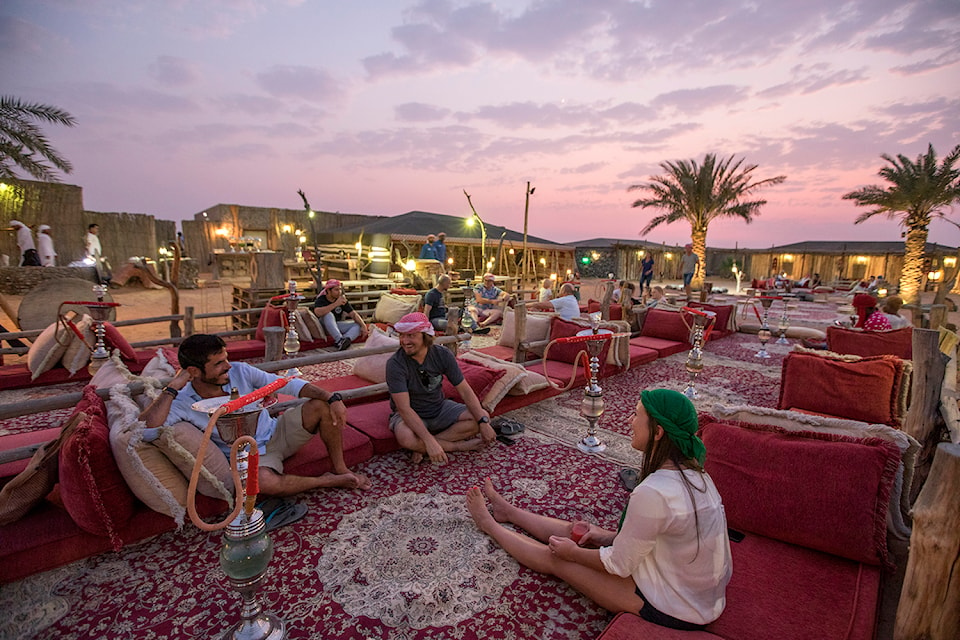
I finally settled down in the centre carpet area, propped up by firm pillows, and a host brought me a shisha (a huge decorative water pipe) to smoke. I laid back and puffed on the pipe, the Milky Way stretching like a swath of paint across the black open sky above me, and thought, “This, right now, is a perfect moment that I will never forget.”
The last day was a continuation of experiencing “the over-the-top exceptional.” A must-do tour is the Burj Al Arab, dubbed the world’s first seven-star hotel. It is an icon of Dubai that redefines modern Arabian luxury. To say it was opulent would be an understatement. The walls were covered in gold and so was my cappuccino in the cafe.
If that wasn’t luxury enough, I was soon in my bikini floating in the AURA Skypool (the world’s highest 360-degree infinity pool), which overlooks the Dubai skyline on one side and the Palm Jumeirah (an artificial archipelago in the shape of a palm tree) on the other.
Would I recommend travelling to Dubai? The question would be, do you like the best of the best the world can offer? All the food I ate was excellent, every experience was over-the-top exceptional…whether you’re a multimillionaire or not, you will feel like one in Dubai.
